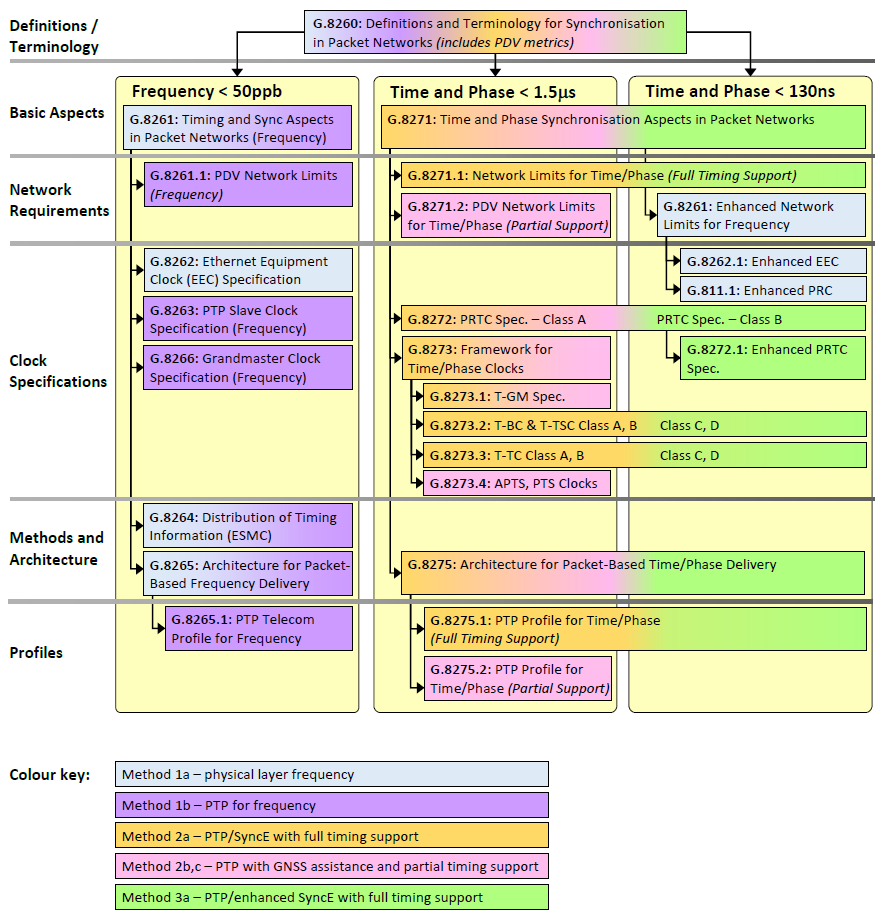ITU-T Packet-Based Synchronisation - A Guide to the Synchronisation Standards
It can be very confusing to work out which ITU-T synchronisation standards apply to which types of network deployment. Since the current generation of synchronisation standardisation started in 2004, the ITU-T has produced 24 separate synchronisation standards. These standards are primarily aimed at enabling the operation of the mobile telecommunications network, by providing synchronisation to the mobile basestations over a packet-based transport network.
Broadly speaking, the ITU-T synchronisation standards can be grouped into three major categories, each of which is covered by several methods:
- Standards aimed at delivering accurate frequency, to better than 50ppb
Main use case: 2G, 3G and 4G cellular mobile radio using Frequency Division Duplexing, FDD
Methods include:- Physical layer synchronisation using Synchronous Ethernet (SyncE)
- Packet-based synchronisation using Precision Time Protocol (PTP)
- Standards aimed at delivering accurate time and phase, to better than 1.5us
Main use case: 3G, 4G and 5G cellular mobile radio using Time Division Duplexing, TDD
Methods include:- Combined PTP/SyncE, using boundary clocks (BCs) or transparent clocks (TCs) at every node in the network (full timing support, FTS)
- Combined GNSS and PTP, operating over existing networks, where not all the nodes in the network contain BCs or TCs (assisted partial timing support, APTS)
- PTP alone, operating over existing networks, where not all the nodes in the network contain BCs or TCs (partial timing support, PTS)
- Standards aimed at delivering very accurate time and phase (e.g. with relative Time Error better than 260ns or 130ns)
Main use case: 5G cellular mobile radio using co-operative processing techniques (e.g., Carrier Aggregation, Coordinated multipoint trans-mission/reception (CoMP)), typically used in fronthaul. Support for positioning.
Methods include:- Combined PTP/enhanced SyncE, using boundary clocks (BCs) or transparent clocks (TCs) at every node in the network (full timing support, FTS)
The standards landscape is depicted in the following diagram, colour coded to identify the methods they relate to. Some standards cover more than one method, in particular G.8260, which covers definitions and terminology applicable to all the different standards.

